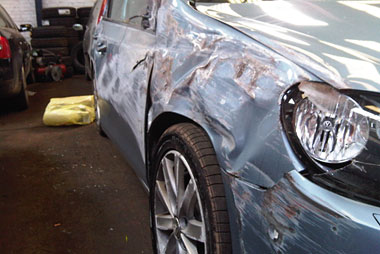Employing the expertise of accident management providers rather than managing accidents in-house is an approach favoured by several large fleets at a recent Fleet200 round table discussion.
Despite moves by fleets to reduce or eliminate vehicle crashes, accidents will still happen.
Controlling those costs is essential, but it can be difficult for a fleet manager to find the time, as Alan Forrester, business support manager at Network Rail, explained: “The problem is that for most companies, accident management is not core business.”
Lorna McAtear, fleet commercial vehicle manager at E.on, added: “It’s having the resource and expertise that is needed for accident management.”
Some fleet operators use their leasing provider for accident management while others use a separate provider. All relied on external resource.
EDF Energy has accident management for own damage provided through its maintenance administration provider which means that drivers have a single point of contact.
Although outsourcing is seen as less of a drain on resources fleet operators cannot remove themselves completely from the process as they still need to authorise high-value repairs and manage the supplier to ensure downtime is kept to a minimum and repair costs do not escalate.
Kevin Boxall, fleet manager at EDF Energy, said setting the right threshold for authorising jobs is crucial. If it is set too low the fleet team will be contacted too frequently, which can be time consuming particularly for a small team.
Boxall pointed out this would effectively mean “you’re acting as the accident management provider yourself”.
It can also delay the start time of the job because the garage is waiting for authorisation.
Boxall now has caveats in place around authorisation.
“If the provider doesn’t receive authorisation from us within a certain time period then up to another level of value they can go ahead with the repair,” he said.
“It means we get slicker, they get slicker and our vehicles aren’t held up unnecessarily awaiting repair,” he said.
McAtear said that thresholds tend to be in “a state of flux” and that E.on changes the authorisation level “as and when” trends are identified.
The accident management provider should advise if a particular repair keeps cropping up and whether the threshold should be set higher.
McAtear and Forrester use benchmarking information from their accident management provider which shows how the thresholds they have set compare to similar fleet customers’ thresholds, on an anonymous basis.
“You start to get monthly trends of what is acceptable and what isn’t,” McAtear said. “Accident management companies can provide the trending analysis for you.”


















Login to comment
Comments
No comments have been made yet.